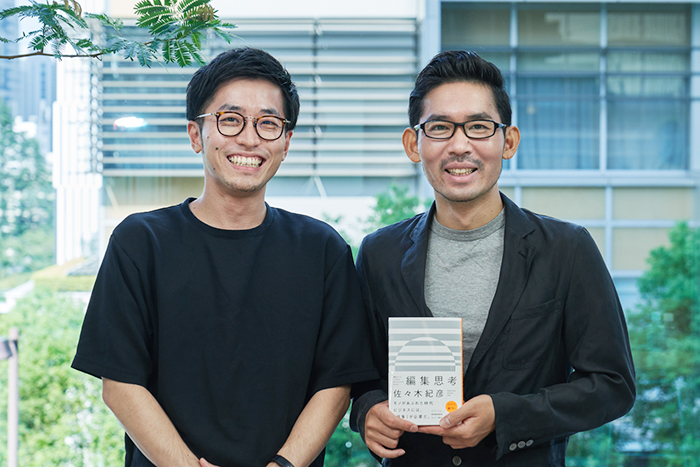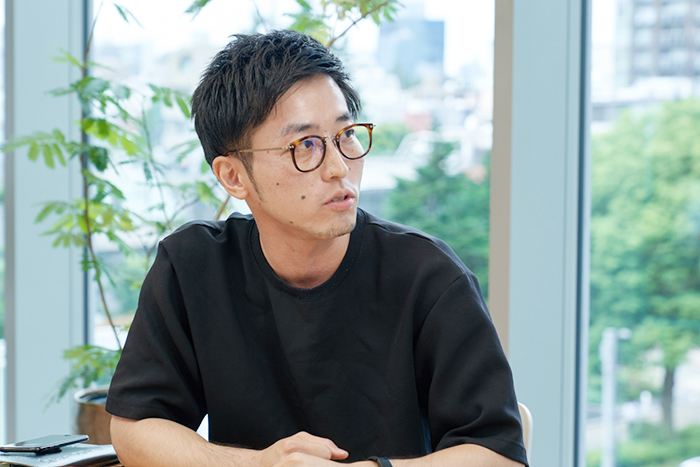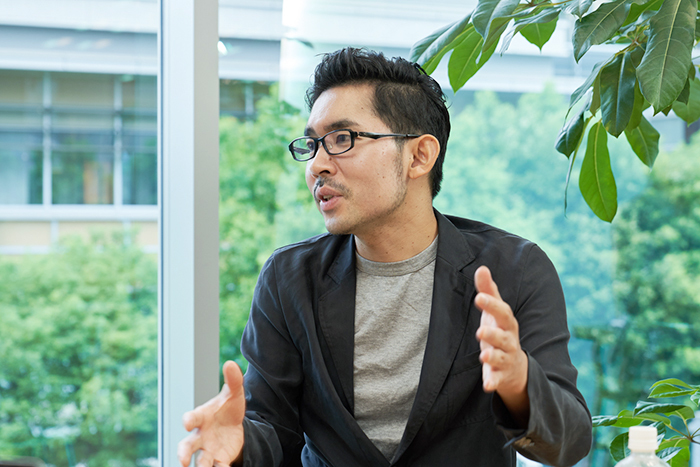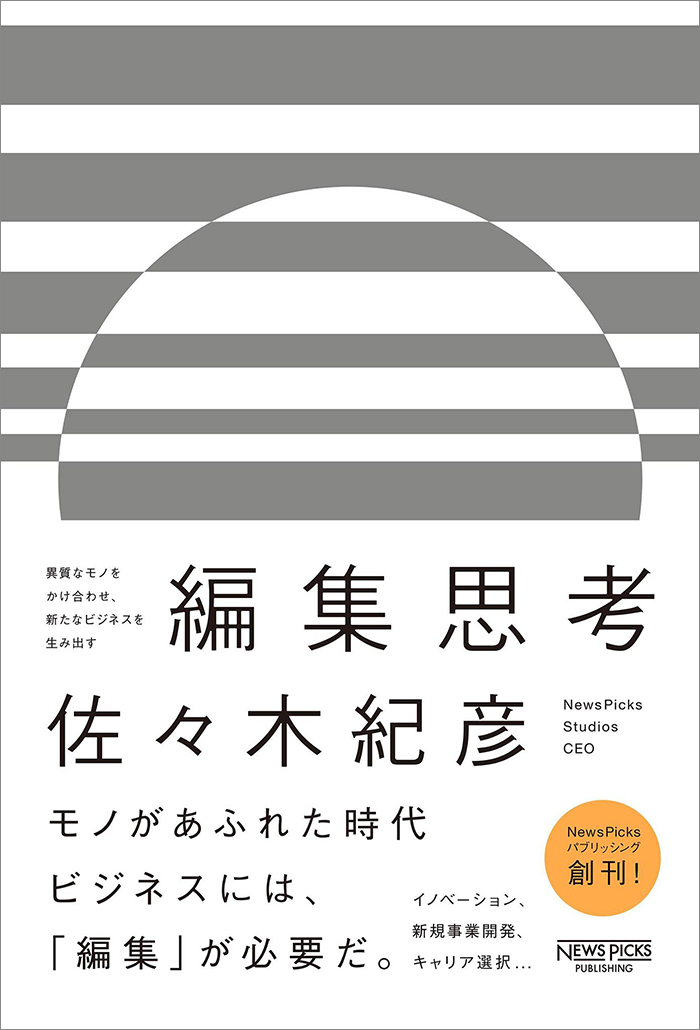Norihiko Sasaki, who served as editor-in-chief of Toyo Keizai Online and NewsPicks, currently leads video-centric content production as CEO of NewsPicks Studios, a joint venture with Dentsu Inc. Starting his career as a reporter for an economic magazine, the skill he cultivated while expanding his professional scope—as an editor, executive, and video creator—is "editorial thinking."
His book "Editing Thinking," which systematizes this skill, was published on October 4. Sasaki explains that behind this work lies a particular concern for young business professionals in their 20s and 30s. Takuma Kudo, a Creative Strategist at Dentsu Inc. who knows Sasaki well, delves into the true intent behind this focus. Kudo also serves as a Professor (Lecturer) at NewsPicks Academia.

NewsPicks' Norihiko Sasaki (right) and Dentsu Inc. Solution Development Center's Takuma Kudo
"Editorial Thinking" is a universal business skill that transcends narrowly defined editing
Kudo: In your new book, you define editorial thinking as a set of four functions: "select," "connect," "deliver," and "deepen." While editing is often perceived as a specialized skill for those who create magazines or books, what exactly do you mean by it here?
Sasaki: Traditional editors inevitably tend to focus heavily on "selecting" and "connecting." Having worked as a reporter and editor for many years, I understand this well. I believe people in the industry, especially those in what's called the old media, have failed at the "delivering" part.
For example, if newspapers had explored channels beyond curation apps and portal sites earlier for delivering content online, they might have retained business leadership. Television, benefiting from high terrestrial broadcast penetration, didn't need to prioritize "delivery" until now, but initiatives like TVer, along with leveraging social media and YouTube, should have been pursued sooner.
Kudo: From an advertising agency's perspective, I feel the importance of "deepening" relationships is growing. Situations where fleeting, fireworks-like campaigns work effectively are limited. As business models shift from "sell and done" to "selling is the beginning" across various industries, there's an increasing push to explore approaches that go beyond advertising and promotion to deepen relationships with consumers.
Sasaki: Exactly. In the coming era, just having one big hit isn't enough. We should view the relationship with users as something long-lasting, like a marriage, similar to subscription models.
In fact, at NewsPicks, we've finally started focusing on YouTube. As our subscriber count grows, so does the revenue generated through that channel. While I'm still learning about "delivering" and "deepening," I wanted to share everything we've experimented with over the past five years—how to build the deep relationships and communities needed to keep users paying ¥1,500 monthly. That's why I've included it all in this book.
Kudo: In that sense, these four functions aren't concepts that can be captured by narrowly defined editing, right? They seem like a package of business skills that cuts across various job domains.
Sasaki: Exactly. I actually think entrepreneurs, executives, and business creation professionals are the ones who utilize editorial thinking the most. They skillfully select people and ideas, connect them, deliver them as a single product to customers, and deepen that relationship. They do it all. I believe editorial thinking can be applied in every aspect of management.
Akira Morita of Sony famously said when creating the Walkman, "It's just putting existing things together—that's innovation." Ichizo Kobayashi, founder of Hankyu, is another prime example. He was the first to build department stores at key railway stations, then connected this to housing by placing homes along the lines, and further developed mortgage loans to encompass finance, ultimately building a major conglomerate. The universal truth is that great innovators are people who can instantly see across different industries, edit them, and deliver them effectively.
Kudo: Recently, advertising agencies have increasingly had opportunities to collaborate with executives and business owners from the "selection" stage onwards. In that sense, it seems precisely professionals like advertising creators and marketers need to master the four key points of editorial thinking.
Hone your decision-making instincts and become a leader
Kudo: This skill set is crucial even for non-executives. People like Yohei Sadoshima of Cork and Genki Kawamura of Toho, whom Sasaki often mentions, are pros at editorial thinking.
Sasaki: The demand is growing for people who can apply these skills—abstracted from traditional editing—to figure out how to connect and promote things, just like they do. If you can grasp an editor's skills as a structure and apply them to business decision-making, you should be able to thrive regardless of industry. Decision-making might sound grandiose, but everyone makes decisions, big or small, in every single task.
Kudo: Applying it to business decision-making is certainly accurate. The four functions of editorial thinking also serve as a framework for generating ideas when advancing a project. Selecting, connecting, delivering, and deepening represent moments for small decisions, right? Following this flow actually becomes a series of decisions.
Another crucial point is that these are the kind of decisions you can revisit multiple times before deadlines or launch dates. In meetings, for instance, start by making decisions with the understanding they can be revised. It would be great to develop the habit of using editorial thinking as a framework to make these "idea" decisions yourself.
Sasaki: That's right. Especially in settings like meetings at large corporations, people often feel each word carries immense weight and responsibility. Because of this, even getting those initial ideas out can be difficult.
People often say idea generation is about talent or intuition, but it's actually something that can be systematized. By increasing the number of decisions you make—whether in meetings or elsewhere—the accuracy improves. It's a small thing, but if you want to do something innovative, I'd encourage you to consciously decide even something as simple as what to eat for lunch every day. Deliberately choosing the same thing every day is also a decision. The key is to make the habit of deciding things for yourself.
Kudo: Incorporating "small decisions" abundantly into work and daily life. That's crucial for anyone wanting to come up with good plans or ideas. When did you start this habit, Sasaki-san?
Sasaki: One major trigger was studying abroad from my late twenties until I turned thirty. Seeing truly remarkable people overseas made me realize I was falling behind. This relates to decision-making too—elite people overseas are often thrust into leadership roles in their twenties.
Whether big or small, the view from the first station of a mountain is different from the tenth. So even if it's a low mountain, I think it's important to start seeing things from the summit. After returning to Japan, I volunteered to become editor-in-chief of Toyo Keizai Online around age 33. It was a tiny editorial team, but leading it changed my perspective. That experience led me to tell young people: "Even if you're at a prestigious big company, you can't just do entry-level work and end your 30s like that."
Kudo: It's easier to build your own mountain these days, right? Take the NewsPicks and Dentsu Inc. collaboration, for example. Project structures are becoming more flexible. Even in your twenties, there's a good chance you can propose something and become a leader.
Mr. Sasaki emphasizes the importance of developing editorial thinking as a framework, becoming someone who can make their own decisions, and ultimately becoming a leader. What is another message he wants to convey to young business professionals? ( Continued in Part 2 )










